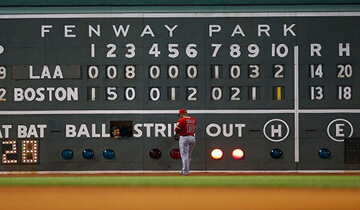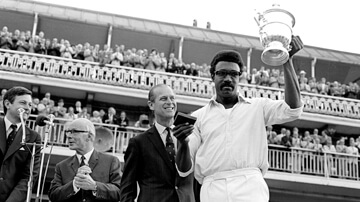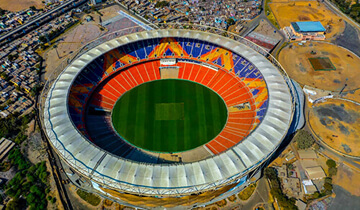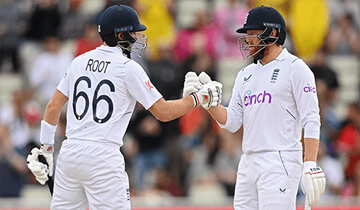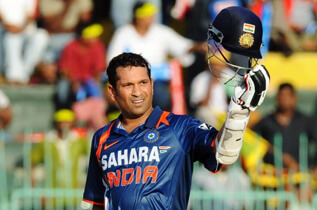Soccer is the most popular sport in the world, with matches watched by millions. A common question from new fans is “How long is a soccer game?”
The standard length of a soccer match is 90 minutes, divided into two 45-minute halves.
Length of Halves
Professional soccer matches consist of two halves of 45 minutes each. The clock counts down from 45:00 to 0:00 in each half.
The referee keeps the official match time and signals when each half starts and ends. There is usually a 15-minute break, or halftime, between the halves for the teams to rest.
Some leagues might have slightly shorter halves for youth or recreational matches. But 90 total minutes, split into two 45-minute halves, is the standard length.
Injury Time
The 90 minutes of regulation only counts the time when the ball is in play. To make up for any stoppages or injuries, the referee adds on extra time, called “injury time,” at the end of each half.
Injury time is a minimum of 1 minute but can be extended to several minutes depending on how much time was lost due to injuries, substitutions, goal celebrations, delays of game, or any other reason.
So while a half is scheduled for 45 minutes, it usually ends up being around 47-50 minutes with injury time added.
Extra Time and Penalty Kicks
In tournament elimination matches, if the score is tied at the end of regulation, they play two more 15-minute periods called extra time. This makes the total match length 120 minutes.
If still tied after extra time, the match is decided by a penalty shootout. So some major tournament games can last over 2 hours total if they require the full 120 minutes plus penalties.
While scheduled for 90 minutes split into two 45-minute halves, a soccer game can last over 2 hours with injury time and extra time. The exact match length depends on stoppages and injuries, but will be a minimum of 90 minutes not counting penalties.
An intriguing question like “how many players on a soccer team?” may arise, with the standard answer being eleven players on each team. This element further adds to the complexity and strategy of the sport, as each player has their unique role and contribution to the game.
Professional Soccer Game Length
Regulation Play
Professional soccer matches follow the “Laws of the Game” stipulating 90 minutes total play time. The game is divided into two 45-minute halves with a 15-minute halftime break in between. The clock runs continuously within each half with no stoppages except for halftime. Any time lost due to injuries, substitutions, disciplinary sanctions, or other delays is added on at the end of each half in the form of “stoppage time” or “injury time”.
Stoppage time is determined by the referee and typically ranges from 2-5 minutes per half, though it can extend longer depending on the length of delays. Some common reasons for stoppage time include:
- Injuries - Time taken to assess and treat injured players on the field
- Substitutions - Time taken for players entering/leaving the field
- Disciplinary sanctions - Time taken to administer yellow/red cards
- Time-wasting - Delays deemed excessive by the referee
- Goal celebrations - Brief goal celebrations are permitted
The amount of stoppage time is announced over the stadium loudspeaker and shown on the scoreboard at the end of the 90 minutes of regulation play. This ensures the game includes the full amount of playing time intended.
Extra Time
In cup competitions or playoff games requiring a winner to advance, two 15-minute periods of extra time are played if the match is tied after 90 minutes of regulation. This brings the total playing time to 120 minutes. There is a short break in between the two periods of extra time.
The extra time periods are played in full without any stoppage time added on. If the score remains tied after both 15-minute extra time periods, the game proceeds to a penalty shootout to determine the winner.
Penalty Shootout
In a penalty shootout, each team takes turns attempting penalty kicks on goal with only the goalkeeper defending. The teams take 5 kicks each, alternating shots. If still tied after the first 10 kicks, it proceeds to sudden death where each team takes a kick in turn until one team scores and the other misses.
The shootout is meticulously organized with the referee determining the goal to be used, the order of kicking, and making sure only authorized players are on the field. Players serving disciplinary suspensions, including red cards from the match, cannot participate.
Penalty shootouts introduce an element of mental fortitude and pressure, providing dramatic conclusions to important games after 120 minutes of play cannot determine a winner. The penalty shootout has been part of the Laws of the Game since 1970.
Game Length in Lower Leagues
Outside of the professional ranks, rules regarding game length can vary by league, region, and according to certain circumstances. Youth, amateur, and semi-pro matches may employ shorter match lengths such as 80 minutes, 70 minutes, or 60 minutes rather than the full 90 minutes.
Youth matches are often broken into shorter halves rather than 45-minute halves to accommodate the age and endurance of the players. Recreational and amateur leagues may have games of just two 30-minute halves.
Shorter games may also be employed in cases of:
- Inclement weather
- Doubleheaders with multiple games per day
- Travel/night games requiring reduced time
- Local league rules and guidelines
So while 90 minutes is the official duration for fully professional matches, abbreviated time lengths are commonplace in lower leagues. The referee controls the match time and stipulated regulations should always be followed.
Historical Changes
While 90 minutes has been the traditional duration of soccer matches, the Laws of the Game have at times stipulated slightly different match lengths. From the 1930s up until the 1990s, competitive international matches were often played with 45-minute halves resulting in an official time of 90 minutes.
However, the referee had the discretion to add on time for stoppages, so games often exceeded 90 minutes in actual duration. This frequently resulted in 95+ minute matches rather than the advertised 90, so in 1995, the laws were updated to the current 45+stoppage time format.
The laws continue to evolve regarding game length. As recently as 2008, the option for “triple punishment” was removed, reducing the penalty for denying a goalscoring opportunity from a red card, penalty kick, and suspension to just a yellow card and penalty kick. Rules are reviewed annually and changed periodically.
While 90 minutes remains intact as the benchmark game length, adjustments are made over time to best serve the spirit and flow of the sport. The future may see more tweaks to match duration and stoppage time procedures as soccer looks to make its rules ideal for players and fans.
The 90-minute regulation time, split into two 45-minute halves, is the foundation that professional soccer is built on. Stoppage time ensures matches contain the intended 90 minutes of actual play. Extra time and penalty shootouts create suspenseful endings when required. The established duration provides consistency across leagues and a perfect balance of athletic endurance and excitement. While amateur rules allow for shorter games, 90 minutes remains the standard for compelling professional soccer competitions around the world.
College, High School, and Youth Soccer Game Lengths
College Soccer
College soccer games at the NCAA Division 1 level are 90 minutes long, consisting of two 45-minute halves. If the game is tied at the end of regulation, two 10-minute overtime periods are played. If the game remains tied after overtime, it goes to a shootout to determine the winner.
The 90-minute game length mimics professional and international matches and helps prepare college players for that level of play. The full 90 minutes tests players’ endurance and fitness. Stoppage time is added to the end of each half to make up for time lost due to injuries or other delays. College teams have a limited number of substitutions, so managing fatigue over the full 90 minutes is an important strategic element.
High School Soccer
High school soccer games are slightly shorter than college games. A standard varsity high school soccer game consists of two 40-minute halves, for a total of 80 minutes of play. As with college rules, stoppage time can be added at the end of each half.
The shorter game duration accommodates the younger age and lower fitness levels of high school players compared to collegians. The shorter halves also allow teams to manage substitutions and player rest over the course of a game. High school teams are allowed unlimited substitutions, unlike college.
If the game ends in a tie, two 5-minute golden goal overtime periods may be played. If the game remains tied after overtime, it goes to a shootout. Some leagues and tournaments, especially early in the season, may skip overtime and go directly to shootouts to avoid excessive game lengths.
Youth Soccer
Youth soccer game lengths vary by age group to account for differences in physical ability, attention span, and maturity. Game lengths tend to increase with age.
- Age 6-7: four 10-minute quarters
- Age 8-9: two 20-minute halves
- Age 10-11: two 25-minute halves
- Age 12-15: two 30-minute halves
- Age 16-19: two 40-minute halves
Younger players often have substitutions at quarters or halves to allow coaches to get all players significant playing time. There is more focus at young ages on fun, development, and equal participation than winning.
As the age increases, the game length gradually approaches high school varsity length. At older ages, players develop higher fitness levels and coaches begin tactical substitutions and managing playing time strategically. However, the developmental focus remains strong even at the oldest youth ages.
Overtime periods are seldom used in youth soccer. Games ending in a tie after regulation play a recoded as draws to avoid excessive game lengths for children. Shootouts may occasionally be used in special playoff and championship games.
Why Soccer Clocks Count Up
Timekeeping Differences From Other Sports
Soccer clocks count up from 0:00 to 90:00 rather than counting down like clocks in most other timed sports. This differs from sports like basketball, football, and hockey that have a set amount of time for their games and count down towards 0:00.
The main reasons for soccer’s unique approach to timekeeping are to minimize disruptions to the flow of the game and keep the referee firmly in control.
Minimizing Disruptions
In sports like football and basketball, the clock stops frequently for things like timeouts, penalties, reviews, and out-of-bounds plays. This allows teams a chance to stop the action, make substitutions, and get organized for upcoming plays.
Soccer does not have these types of built-in delays so counting down would result in a lot of stoppage time being added. By counting up, it’s easier for the referee to add on any injury time or delays at the end without interrupting the preceding 90 minutes of action.
This approach emphasizes maintaining the flow of the game rather than introducing artificial breaks in play. Soccer’s fast-paced, continuous action is part of what makes it so exciting to watch. Stopping the clock repeatedly would disrupt this flow and alter the fundamental nature of the game.
Keeping the Referee in Control
Since soccer referees have full discretion on when to stop play and how much time to add at the end, counting up further reinforces their control of the game.
If the clock counted down, players and coaches might pressure the referee to stop the clock more often. But with the clock always running up, everyone knows that the referee will add time as needed.
This removes arguments over timekeeping and timeouts. The referee’s judgment of how much time to add is respected and accepted.
Additional Factors
-
The soccer clock counts up rather than down to minimize disruptions and keep the referee in control.
-
There are no timeouts, only limited substitutions.
-
Game length is consistent across all levels to keep rules simple to follow.
In summary, soccer’s unique approach of counting up serves some important purposes. By avoiding interruptions to the game flow and keeping the referee firmly in charge, it maintains the sport’s continuous, fluid nature and simplicity at all levels.
Conclusion
Soccer’s distinctive 90-minute format, split into two halves, provides the ideal balance of athleticism, drama, and complexity. The consistent time frame across professional, collegiate, and youth leagues allows for simplicity in rules and competitive integrity. While youth and amateur games employ shortened lengths, 90 minutes remains the standard for fully-fledged competition. The countdown clock uniquely keeps the action continuous and gives referees full control. Stoppage and injury time reflect soccer’s emphasis on flow over fragmentation. The limited substitutions further test endurance over the prolonged duration. Extra time and penalty shootouts provide suspenseful tiebreaking methods after regulation. Soccer’s set 90-minute structure has withstood the test of time, benefiting players and fans alike. The rules achieve the proper equilibrium - enough time to display skill and determination, but not so lengthy as to bog down the constant, energetic pace. This refined duration captures soccer’s essence as the beautiful game.


































